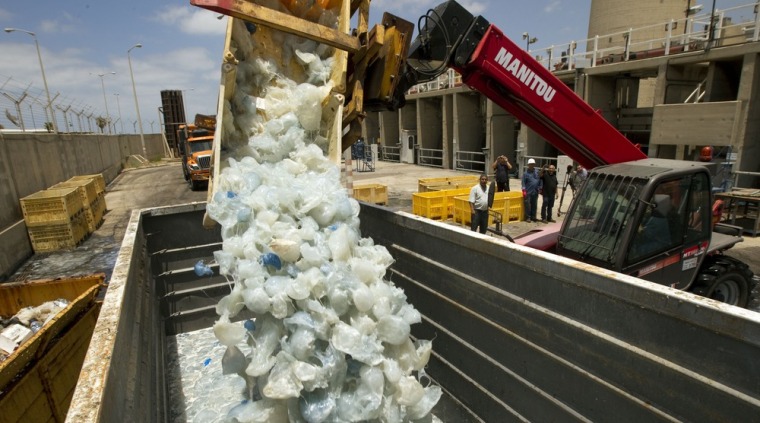Will jellyfish inherit the Earth, or at least the oceans?
A study released Thursday found that the spineless creatures are becoming the dominant predator in areas where fish species are being reduced by overfishing and habitat destruction.
It's not just that reduced competition is giving the jellyfish more room. The jellyfish themselves are evolving into bigger specimens by increasing the water content in their gels, the study concluded.
Since jellyfish don't swim much, they mostly float, that larger mass gives them much better chances of floating into their prey — as well as into other jellyfish for sexual reproduction.
Because of that evolutionary trait, jellyfish have similar potential for growth and reproduction as their fish competitors, the researchers found.
"To achieve this production, they have evolved large, water-laden bodies that increase prey contact rates," the researchers wrote in a study titled: "Faking Giants: The Evolution of High Prey Clearance Rates in Jellyfish."
"While fish developed visual acuity to detect prey, jellyfish depend on a primitive system based on direct contact with prey," noted study co-author Angel Lopez-Urrutia of Spain's Oviedo University. "The key to their success is that by increasing their body size they displace more water and drag more prey toward their tentacles. It's an effective strategy as long as the swimming pace of jellyfish is sufficiently slow."
Unless overfishing is curbed and habitat restored, the authors wrote, the findings suggest "a future 'gelatinous' ocean reminiscent of the early Ediacaran" Period some 600 million years ago.
The study was published in the peer-reviewed journal Science.
Earlier studies have suggested that jellyfish numbers will also increase as ocean waters warm due to greenhouse gas emissions.
Moreover, some of the nearly 2,000 jellyfish species have already expanded their ranges as once-cold waters warm up.
It's not just the fear, and sometimes pain, they strike in beachgoers that has experts worried.
The U.S. National Science Foundation notes that jellyfish have undermined fishing industries in the Bering and Black seas and forced the shutdown of seaside power and desalination plants.
Earlier this summer, jellyfish clogged the seawater cooling system of several power plants in Israel, including a nuclear reactor that had to shut down briefly. Two Scottish nuclear reactors and a Japanese one saw similar disruptions days earlier.
One researcher, Lucas Brotz of the University of British Columbia in Vancouver, Canada, notes that some have suggested finding more uses for jellyfish, some of which are harvested for consumption in Asia. Some are also collected for their collagen, a tissue used in various medical treatments including rheumatoid arthritis.
But that doesn't deal with the crux of the problem, he says: human practices that favor jellyfish over fish. "There is evidence to show that fishing, pollution, aquaculture, global warming and coastal development can all create conditions which favor jellyfish over fish," Brotz says on his website.
"We may need to decide now whether or not we want our children to be eating jellyfish burgers," he adds. "If our behavior doesn't change, they might not have a choice."
